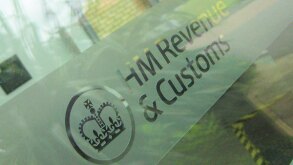
|
Daniel Harrison |
As part of the recent amendment to the tax regulations (the Amended Tax Law No. 05/NA, dated December 20 2011), the Lao legislators have introduced a new depreciation method: Activity depreciation. The less commonly used (for tax purposes) method brings the total number of statutory depreciation options to three; the other two being the pre-existing straight-line and declining-balance methods (although the declining-balance method described in the regulations more closely resembles the sum-of-years-digits method).
Under the new activity depreciation method, taxpayers are able to write off fixed assets based on the actual level of activity in a given period, rather than on the traditional time basis. It is more commonly used in management accounting to better match the economic reality of an asset's life – making it a surprise inclusion in the Amended Tax Law.
Explained
Activity depreciation is based on the level of activity of an asset. This could be kilometers driven for a vehicle, hours of operation for a machine, or the number of units produced in a factory.
When the asset is acquired, its useful life is estimated in terms of the level of activity (for example for a vehicle, 500,000 km). Depreciation is calculated by multiplying the asset's cost by the annual use (in activity units) as a percentage of the total activity units of its useful life:
Cost × Annual use in activity units ÷ Useful life in activity units = Depreciation
Example
According to its technical specifications, a truck may cover 500,000 kilometers over its useful life. It costs $25,000 and runs annually as shown in Table 1.
Table 1 |
|||
Distance travelled |
Calculation |
Depreciation |
|
Year 1 |
200,000 km |
$25,000 × (200,000 km ÷ 500,000 km) |
$10,000 |
Year 2 |
150,000 km |
$25,000 × (150,000 km ÷ 500,000 km) |
$7,500 |
Year 3 |
80,000 km |
$25,000 × (80,000 km ÷ 500,000 km) |
$4,000 |
Year 4 |
70,000 km |
$25,000 × (70,000 km ÷ 500,000 km) |
$3,500 |
Total |
500,000 km |
$25,000 |
|
Comparison
When comparing the example to depreciation using the straight-line method, the activity method results in higher depreciation in the first two years:
Table 2 |
|||
Activity |
Straight-line |
Difference |
|
Year 1 |
$10,000 |
$5,000 |
$5,000 |
Year 2 |
$7,500 |
$5,000 |
$2,500 |
Year 3 |
$4,000 |
$5,000 |
($1,000) |
Year 4 |
$3,500 |
$5,000 |
($1,500) |
Year 5 |
$5,000 |
($5,000) |
|
Total |
$25,000 |
$25,000 |
|
The tax saving in the first year is $1,200 ($5,000 in additional depreciation × the profit tax rate of 24%).
There are no additional incentives, as total depreciation does not change, only the timing of the deductions, making it possible to increase depreciation in the initial years to produce tax savings and subsequently improve cash flow.
The method is clearly beneficial where an asset will be used excessively in the initial years or for the full life of the asset where it is not expected to outlive the statutory useful life.
The depreciation method used for an asset need only be indicated in the depreciation schedule at the first year-end, meaning the taxpayer can calculate the depreciation under the three methods in the first year and elect that which provides the greatest benefit.
With supplementary regulations still pending, one area that remains unclear is how to determine useful life in activity units. Thus, taxpayers using this method should document in as much detail as possible how the useful life has been determined, until it is seen in practice how the tax authorities will approach it.
Daniel Harrison (daniel.harrison@vdb-loi.com)
VDB Loi
Tel: +85 62 145 4679
Website: www.vdb-loi.com









